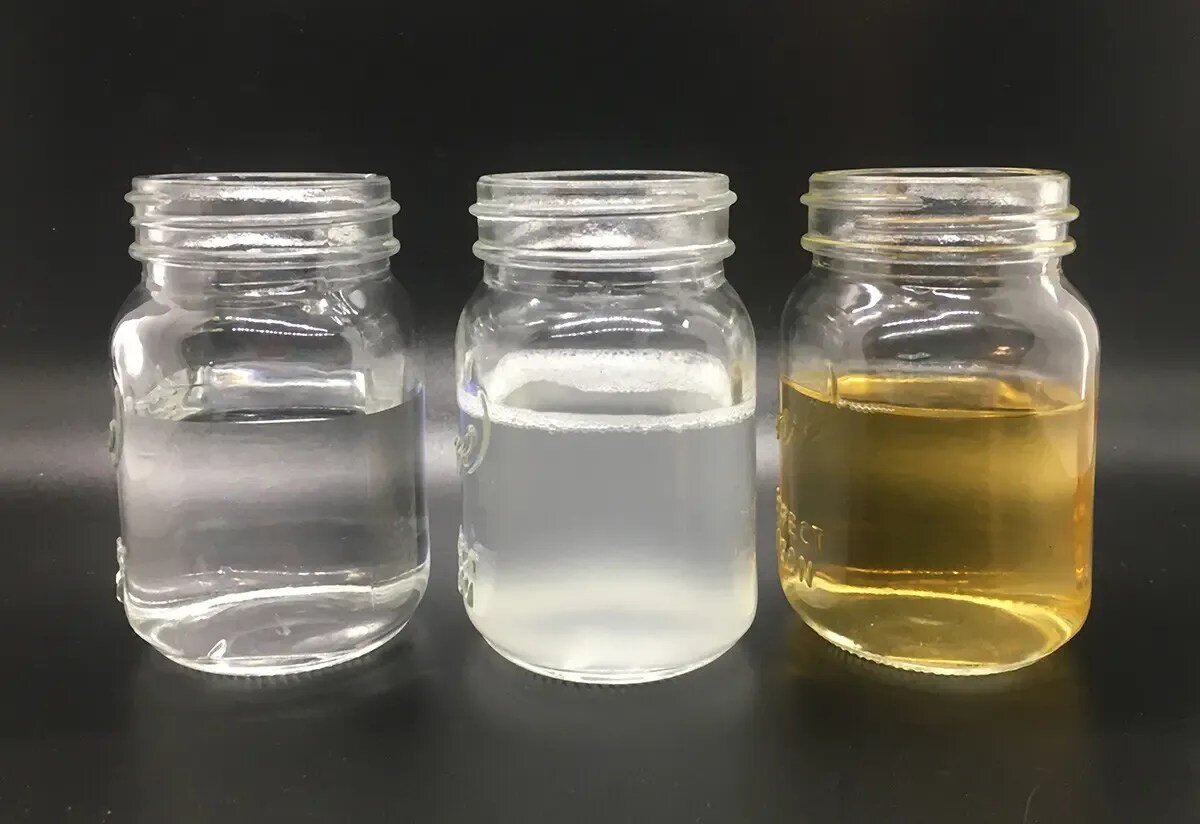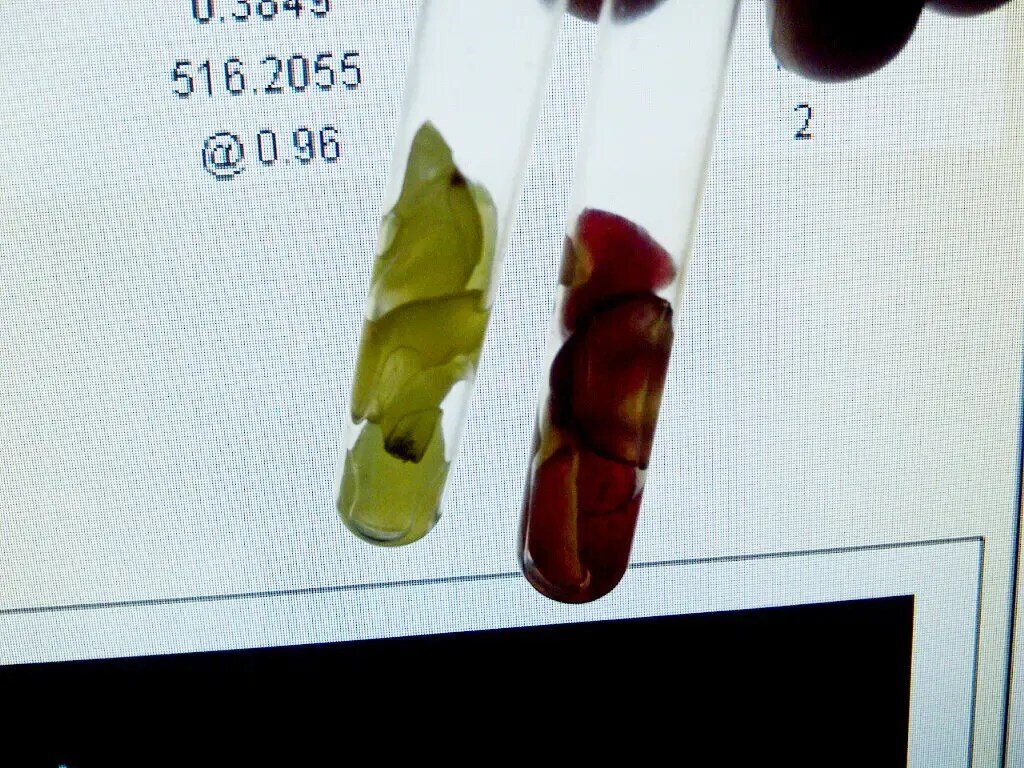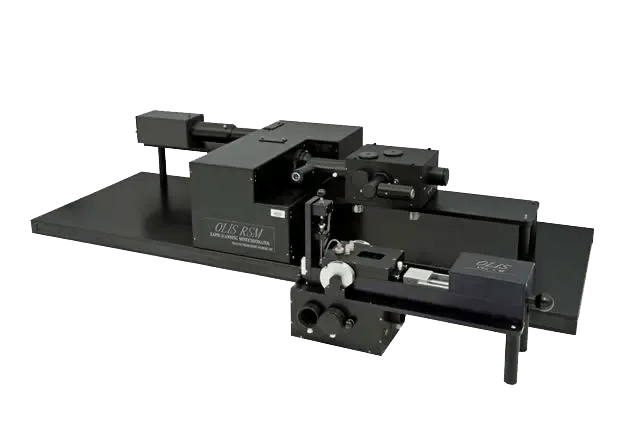
OLIS CLARiTY 1000
“The ability to conduct direct spectrophotometric studies under noninvasive physiological conditions represents a new and powerful approach to examine the extents and rates of biological events in situ without disrupting the complexity of the live cellular environment."¹
This unique spectrophotometer allows one to achieve breakthroughs in whole cell studies and more: follow the electron transport chain in dilute suspensions of mitochondria, follow the vitamin A cycle using an intact retina, follow fermentation as the cells grow or die.
Like other CLARiTY models, scatter does not matter. Unique to the “1000” line, detection is rapid-scanning, to 100 scans per second.
Standard Model Performance
CLARiTY Absorbance
Download Specifications
Upcycle from Standard Flow
Fluorescence
Circular Dichroism on Clear Samples
Circularly Polarized Luminescence
Phosphorescence Lifetime
Accessories

"I don't plan to purify anything ever again. With the CLARiTY 1000, I've gone away from purified studies. I'm only interested in whole cell work from here on out."
Dr. Robert Blake, Ph. D,Owner of 2 CLARiTY 1000s,including the first one, circa 2012
"...I see it as learning more and asking questions that could not be addressed in the past. I think we should keep in mind that humanity in general will reap benefits of new technical advances such as the CLARiTY and RSM. It will interesting to see how history eventually views the effect of your father's innovations on the ability of medical research to move forward and therefore benefit humanity in general."
Federico Gonzalez-Fernandez, M.D., Ph.D
The Short and Long of It.
The Short
A single page piece, circa 2014, on using CLARiTY to follow metabolism in the electron transport chain:
“Today, research using a new integrating cavity spectrometer has demonstrated that isolated cell components do not act the same as when those components are in their native environment … when they are not in the environment in which they were designed to function, they may behave differently.”
The Long
A 16 page chapter, circa 2020, on using CLARiTY:
“One thing is certain: one way to understand how a protein functions in an intact organism is to actually observe that protein as it functions in the intact organism. This paper provides an example of just such an observation.”
The sample was the most concentrated suspension of polystyrene particles in water (about 108 of the 1 micron particles/mL H2 O) as shown on page 2. Recall, polystyrene particles do not absorb light, so the correct answer is 0.0 AU.
The ubiquitous HP/ Agilent diode array spectrometer returns an answer that is more than 1.1 AU. The world-class dual beam, double monochromator based Cary 14 collected a maximum absorbance near 0.7 AU. As expected, better results were obtained from the “dual wavelength” spectrophotometer which was developed by Britton Chance expressly for the purpose of studying turbid samples.
In its split beam mode, the DW-2 reports absorbance of 0.5 AU and in its dual wavelength mode, an impressive <0.2 AU. Understandably, this dual wavelength model has held the honor as the “gold standard” of performance on turbid suspensions since the 1960s.
The CLARiTY, however, gets zero absorbance, give or take 0.01 AU.
And, as these and other data will show, scatter does not matter to the CLARiTY, including the UV, where even the “gold standard” cannot handle the scatter correctly.
Results from four popular and respected spectrophotometers compared with the Olis CLARiTY 1000
Setting the new benchmark of performance.
For decades, spectrophotometrically working with turbid suspensions has proved elusive, because the measurement beam is scattered in all directions; only a fraction of it passes through the sample to the detector. “Apparent high absorbance” is the result, as these examples show.
Why Choose the OLIS CLARiTY 1000?
#1
Your career is about making brilliant breakthroughs and you are ready for a spectrophotometer that takes you where your ideas lead you.
#2
Better data, faster and more economically, is a welcome alternative to the costly struggles of sample clarification – destruction – and countless repetitive experiments.
#3
You want irrefutable proof and total confidence in unique, big experiments. Follow metabolic activity, binding events, and other complex reactions in 3D in exactly the environment you care about.
Perfect for the most demanding measurements
Every component, every parameter, is optimized for definitive results on rapidly varying heterogenous samples. Microsecond speed, nanomolar sensitivity, nanometer resolution, immunity to scatter … In the right hands, the CLARiTY 1000 creates paradigm shifts in understanding how proteins functions, how cells grow, how nanoparticles bind, because there is no need to disrupt the samples for the measurement!
Ask for a price quote today!
Do you know what a “subtractive” double monochromator is?
We didn’t either, until we invented one. (And then another!) These alternatives to the “additive” double monochromators used by all the other commercial manufacturers have very useful advantages. Learn about their zero temporal dispersion and homogeneous output beams here.
Not sure if you should choose a diode array, CCD, or scanning spectrophotometer?
Reading this may help.
How clear is your sample?
Only one of these three samples is clear enough for a cuvette spectrophotometer to measure without filtering. A CLARiTY can measure any of them, without filtering or clarifying.
The CLARiTY Advantage
Integrating Cavity Spectrophotometers For a Powerful New Generation of Measurements
Everyone knows about spectrophotometers that use cuvettes. With cuvette spectrophotometers, accurate results are possible only with perfectly clear samples. When the sample is hazy or turbid, the light beam carrying the absorbance information is scattered, much of it away from the detector. The answer is therefore higher absorbance than is correct. Read more...
OLIS CLARiTY 1000 Resources
Illustrative Experiments with CLARiTY: Check out some of the amazing experiments researchers have done with CLARiTY instruments. What will you do?
DOCUMENT: CLARiTY brochure.
PUBLICATION: Oxidation of Cytochrome 605 Is the Rate-Limiting Step when Ferrimicrobium acidiphilum Respires Aerobically on Soluble Iron
Robert C. Blake II, et al, 2020
American Society for Microbiology, DOI: 10.1128/AEM.01906-20
PAGE: Core to a “CLARiTY” spectrometer is the DSPC –DeSa Suspension Presentation Chamber – which houses an integrating cavity.
PAGE: Publications citing CLARiTY spectrophotometers
DOCUMENT: The 1000 line: Best kinetics with least sample, highest photometric performance, and maximum experimental design opportunities.
DOCUMENT: Yeast spectra acquired with the OLIS CLARiTY 1000A.
CASE STUDY: Characterization of pigments in grapes
DATA: Dr. Mas Kono of the Storm Eye Institute at Medical University of South Carolina visited OLIS to collect comparative data on a Bovine Rod Outer Segment (ROS) prep from both the CLARiTY and a traditional 1 cm2 spectrometer. His parting remarks, “Bottom line though, it is a strong case for clarity.”
Introducing the RSM 1000 rapid-scanning spectrophotometer for stopped-flow & much more
Can one determine absorption (extinction) coefficients using the CLARiTY?






















